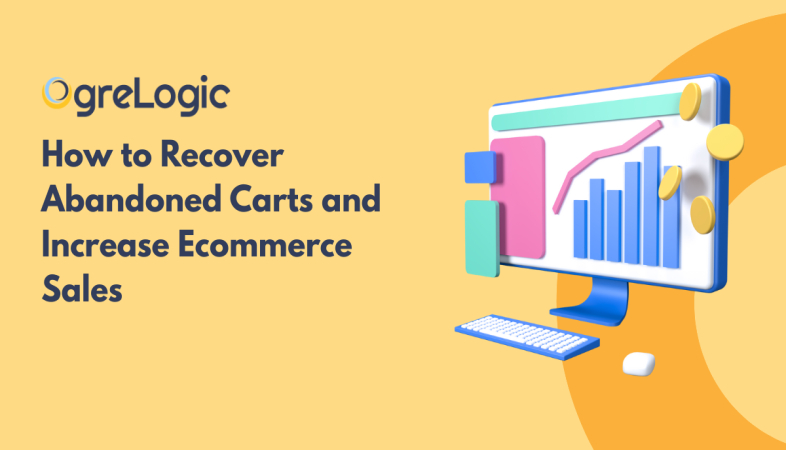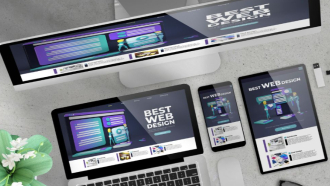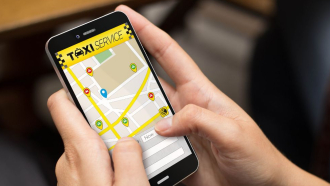
How to Recover Abandoned Carts and Boost Ecommerce Sales

Key Takeaways
-
Cart abandonment is inevitable — but recoverable. With rates hovering near 88%, recovering even a small percentage can significantly boost revenue.
-
Fix on-site friction first. Eliminate hidden costs, simplify checkout, and optimize for mobile before chasing shoppers with remarketing.
-
Understand shopper intent. Some carts are for wishlisting, price tracking, or entertainment — tailor your recovery approach accordingly.
-
Use psychological triggers. Perceived ownership, price guarantees, and social proof can turn hesitation into action during the first visit.
-
Follow up with relevance. Scarcity messages work best for window shoppers, while targeted discounts are more effective for those who already added items to their cart.
-
Think multi-channel. Coordinate recovery efforts across email, display, and social ads for a consistent, memorable brand experience.
-
Segment your audience. Treat a first-time visitor differently from a loyal repeat buyer — and adjust incentives to protect your margins.
-
Move fast with email. Recovery emails sent within an hour enjoy the highest conversion rates — and open rates over 46%.
-
Turn one recovery into many. Use post-purchase engagement to build loyalty and encourage repeat orders.
The $4 Trillion Problem in Ecommerce
Every year, ecommerce brands collectively lose trillions of dollars in potential revenue to one frustrating challenge: shopping cart abandonment. You’ve done the hard work—driving traffic, attracting the right audience, and getting them to add items to their cart—only for them to vanish before completing the checkout process.
Historically, abandonment rates hovered around 70%. But in the wake of 2020’s ecommerce boom, those numbers have jumped to nearly 88%, as shoppers embraced browsing without buying. Many use their online carts like virtual window displays—adding products to “think about” later, compare prices, or simply dream-shop while killing time.
Here’s the good news: abandoned carts aren’t a dead end. They’re a second chance. Every unpurchased cart represents a warm lead—someone who has already shown purchase intent. By understanding why people abandon carts and applying the right recovery strategies, you can turn a significant percentage of those lost sales into loyal customers.
What Is Cart Abandonment and Why It Matters
Cart abandonment happens when a shopper adds items to their online cart but leaves without completing the purchase. The reasons vary—sometimes it’s a website issue, sometimes it’s a personal choice—but the impact on your revenue is the same.
Why it matters:
- Wasted marketing spend – You’ve already invested in ads, SEO, or social campaigns to bring them in. Without recovery strategies, that investment is lost.
- Lost lifetime value – Each abandoned cart isn’t just one missed sale; it’s potentially years of repeat business gone.
- Competitive disadvantage – If you’re not recovering carts, your competitors probably are.
In short, ignoring cart abandonment is like letting customers walk out of your store with full baskets… and not even trying to stop them.
Top Reasons Shoppers Abandon Their Carts
Not all abandonment happens for the same reason. To fix it, you need to address two main categories: negative on-site experiences and shopper motivations unrelated to UX.
A. Negative On-Site Experiences
1. Hidden Costs
One of the fastest ways to lose a sale is to surprise customers with unexpected charges at checkout—extra shipping fees, taxes they weren’t aware of, or mandatory add-ons.
Solution: Be upfront about costs early in the shopping process. Display estimated shipping fees before checkout or offer a free shipping threshold. The more transparent you are, the less likely customers are to feel “tricked” and abandon their carts.
2. Poor Mobile Experience
Over 50% of online shoppers browse and buy via mobile devices. If your checkout process is hard to navigate on a small screen, you’re pushing customers away.
Solution: Ensure your site is mobile-optimized. That means:
-
Large, tappable buttons.
-
Minimal typing required.
-
Autofill enabled for forms.
-
Pages loading in under 3 seconds.
3. Frustrating Checkout Flow
Forcing users to create an account before buying, having too many form fields, or offering limited payment methods can kill conversions.
Solution:
-
Offer guest checkout.
-
Limit checkout steps to 3 or fewer.
-
Accept a variety of payment methods, including installment options like Affirm, Klarna, or Afterpay.
4. Price Sensitivity
Some customers abandon carts when they suspect they might find the same product cheaper elsewhere.
Solution: Use on-site messages like price guarantees or limited-time offers to encourage purchase without triggering buyer’s remorse.
B. Shopper Motivations Unrelated to UX
1. Cart as a Wishlist or Comparison Tool
Many shoppers treat carts like a scratchpad—adding items to compare later or tally up costs.
Opportunity: Retarget these customers later with reminders, price-drop alerts, or bundle offers.
2. Shopping for Entertainment
Some people browse and fill carts just for fun. While not every “window shopper” converts, providing a delightful experience can build brand affinity.
Opportunity: Inspire them with curated recommendations, lifestyle imagery, and shareable content.
3. Tracking Price Changes
Savvy shoppers often park items in their cart and wait for discounts.
Opportunity: Use retargeting and email campaigns to notify them when prices drop or when stock is running low.
Reducing Abandonment During the First Visit
Preventing abandonment before it happens is the most cost-effective strategy. This is where psychological cues come into play.
A. Perceived Ownership
The concept of “perceived ownership” triggers emotional attachment before purchase. The more a customer imagines using the product, the harder it is to let go.
Ways to spark perceived ownership:
-
Use-oriented images – Show your product in action.
-
Interactive experiences – Zoom-in features, 360° views, or clickable product hotspots.
-
Augmented reality – Let shoppers “try on” sunglasses or visualize furniture in their room via their phone.
B. Price Guarantees
A price guarantee promises to match or beat competitors’ prices, reducing hesitation and comparison shopping.
Benefits:
-
Builds trust.
-
Encourages immediate purchase.
-
Reduces buyer’s remorse.
C. Social Proof
Show ratings, reviews, and testimonials directly in the cart or checkout flow.
Why it works:
-
Reduces uncertainty.
-
Boosts confidence that the purchase is worth the price.
-
Encourages first-time buyers to trust your brand.
Bringing Customers Back to Complete Their Purchase
Even with an optimized checkout, some shoppers will still leave. That’s where return-visit strategies come in.
A. Scarcity Messaging
Highlighting urgency can push customers to act:
-
“Only 3 left in stock.”
-
“Sale ends in 2 hours.”
Caution: Avoid using scarcity on customers who already have the product in their cart—it can backfire if they suspect it’s false.
B. Price Incentives
Discounts or free shipping offers work best when targeted to those who’ve added items to their cart but didn’t complete checkout.
Best practices:
-
Keep it relevant to the specific products they viewed.
-
Avoid overuse—constant discounts can erode perceived value.
Leveraging Marketing Channels for Cart Recovery
The most effective cart recovery strategies use multiple channels and segmentation to maximize relevance.
A. Multi-Channel Strategy
Customers move between devices and platforms. They might browse on mobile, then later see your ad on Instagram, and finally complete the purchase on desktop.
To capture them:
-
Keep branding and messaging consistent across email, social ads, and display ads.
-
Coordinate timing so your reminders feel like part of one campaign, not random interruptions.
-
Personalize creatives to feature the exact products they left behind.
B. Segmentation for Maximum Impact
Not all cart abandoners are the same.
Segment by:
-
Recency – Send urgent reminders within an hour for best conversion rates.
-
Purchase history – Offer bigger incentives to first-time buyers; upsell accessories to returning customers.
-
Device type – Encourage desktop checkout for those who browse on mobile but tend to buy on desktop.
C. Email Marketing for Cart Recovery
Cart recovery emails boast 46%+ open rates—much higher than standard promotional emails.
Tips:
-
Act fast – Send the first email within an hour.
-
Keep it short – They already know your brand; focus on the carted items.
-
Personalize – Include images, names, and details of the items.
-
Test subject lines – Experiment with urgency, personalization, and curiosity.
6. Turning Recovered Carts into Long-Term Customers
Recovering the cart is just the beginning. Use that momentum to build loyalty:
-
Offer post-purchase discounts for future orders.
-
Enroll them in a rewards program.
-
Follow up with personalized product recommendations
Action Plan: Turn Abandoned Carts Into Sales Starting Today
Recovering abandoned carts isn’t just about sending a quick email — it’s about building a thoughtful, multi-step system that keeps your brand in front of ready-to-buy customers. Here’s your step-by-step roadmap:
Step 1: Audit Your Checkout Process
-
Identify points of friction: hidden costs, poor mobile usability, slow load times, or limited payment options.
Step 2: Implement On-Site Conversion Boosters
-
Add lifestyle product images, interactive views, and social proof during the cart and checkout process.
-
Introduce price guarantees to reduce comparison shopping.
Step 3: Set Up Your Multi-Channel Recovery Campaign
-
Combine email, retargeting ads, and social media to reach shoppers wherever they are.
-
Keep design, tone, and offers consistent across platforms.
Step 4: Segment and Personalize Messaging
-
Group shoppers by recency, purchase history, and device type.
-
Craft tailored offers for each segment to maximize ROI.
-
CTA: Book a consultation to create your custom cart recovery segmentation strategy.
Step 5: Deploy High-Impact Recovery Emails
-
Send the first message within 1 hour of abandonment.
-
Keep it short, focused on the product, and include a compelling subject line.
Step 6: Track, Test, and Optimize
-
Measure open rates, click-through rates, and recovered revenue.
-
Test different subject lines, incentives, and timings.
Ready to Reclaim Your Lost Revenue?
Don’t let warm leads slip away — every day you delay using our conversion rate optimization service in Texas is another day your competitors might win over your customers.
Start today:
-
Request a FREE cart abandonment strategy call.
-
Get a custom recovery plan tailored to your store.
-
Begin turning abandoned carts into loyal, repeat buyers.
📞 Call (512) 861-8471 | [email protected] | www.ogrelogic.com








